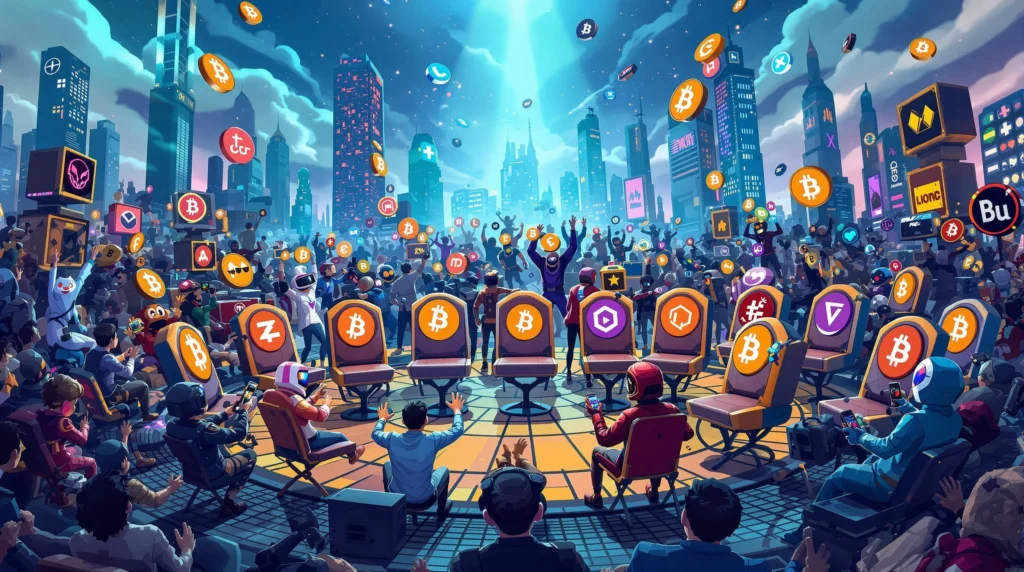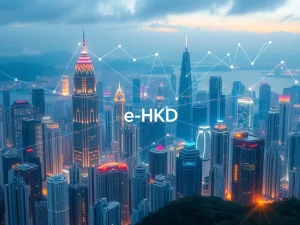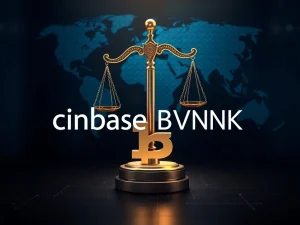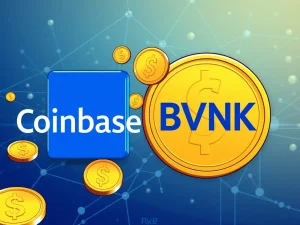Grim Reality: Blockchain Gaming Market in a ‘Game of Musical Chairs’ – Exec Warns

The vibrant world of blockchain gaming, often touted as the future of interactive entertainment, might be facing a stark reality check. According to a leading executive at Gunzilla Games, the current state of the blockchain gaming market resembles a precarious ‘game of musical chairs.’ This unsettling analogy points to a critical issue: the industry’s heavy reliance on existing capital within the crypto ecosystem, with a concerning lack of fresh investments to sustain its ambitious growth.
Is the Blockchain Gaming Market Really a ‘Game of Musical Chairs’?
At the heart of this ‘game of musical chairs’ metaphor is the observation that the Web3 gaming space is primarily fueled by recycled money. While there’s considerable activity and excitement, much of the capital circulating within blockchain games isn’t newly injected funds from outside the crypto sphere. Instead, it’s largely existing cryptocurrency being reinvested or moved between different projects. This creates a system where growth is dependent on the same pool of resources being constantly reshuffled, rather than expanded.
This situation poses several critical challenges:
- Sustainability Concerns: A system reliant on recirculated funds is inherently unsustainable in the long run. For the blockchain gaming market to truly flourish and reach mainstream adoption, it needs a consistent influx of ‘new money’ – capital from traditional gaming investors, venture capitalists outside the crypto bubble, and ultimately, mainstream gamers themselves.
- Limited Growth Potential: Without new capital, the blockchain gaming market’s growth is capped. Innovation and development require substantial investment. If developers are primarily competing for the same pot of existing crypto funds, it restricts the scale and ambition of projects that can be realistically undertaken.
- Market Volatility Amplification: Relying on existing crypto capital makes the gaming sector highly susceptible to the broader cryptocurrency market’s volatility. Downturns in the crypto market can directly impact the funds available for Web3 gaming development and investment, leading to instability and uncertainty.
The Urgent Need for ‘New Money’ in Web3 Gaming
The phrase ‘new money‘ in this context refers to capital originating from outside the existing cryptocurrency ecosystem. This could come from various sources, including:
- Traditional Gaming Industry Investors: Major players in the traditional gaming industry, who are still largely cautious about Web3, represent a massive untapped source of capital. Attracting investment from these established giants could inject significant ‘new money’ into the blockchain gaming space.
- Venture Capital Beyond Crypto: Venture capital firms that traditionally invest in technology and entertainment, but haven’t yet fully embraced crypto, are another key target. Educating these firms about the potential of blockchain gaming and demonstrating viable business models is crucial to unlock this ‘new money’ stream.
- Mainstream Gamers: Ultimately, the long-term success of Web3 gaming depends on attracting mainstream gamers. As more traditional gamers become comfortable with and see the value in blockchain-based gaming, their spending and engagement will represent a significant source of ‘new money’ for the ecosystem.
Examples of the ‘Musical Chairs’ Effect
We can observe the ‘game of musical chairs’ dynamic in several aspects of the current blockchain gaming landscape:
- Token Swapping and Speculation: Many blockchain games initially attract players based on token incentives and play-to-earn models. However, if the influx of ‘new money’ (players and external investment) doesn’t keep pace with the token supply, the value of these tokens can become unsustainable. Players may move from one game to another chasing the next ‘hot’ token, essentially reshuffling existing crypto wealth.
- NFT Marketplace Dynamics: While NFT sales can generate revenue for game developers, a significant portion of NFT trading volume often occurs within the existing crypto community. If the market relies solely on existing crypto holders buying and selling NFTs amongst themselves, it can become a closed loop, lacking the fresh capital needed for sustained growth.
- Funding Rounds and Project Lifecycles: Even funding rounds for blockchain gaming projects can sometimes reflect this ‘musical chairs’ phenomenon. If investment primarily comes from crypto-native funds that are themselves managing capital from within the crypto ecosystem, it doesn’t necessarily represent a net increase in capital for the broader gaming industry.
Benefits of Injecting New Capital into Blockchain Gaming
Securing ‘new money’ for the blockchain gaming market is not just about sustaining current projects; it’s about unlocking the full potential of this revolutionary technology. The benefits of attracting external capital are manifold:
- Fueling Innovation and Development: ‘New money’ empowers game developers to create more ambitious, higher-quality games with richer gameplay, stunning graphics, and innovative blockchain integrations. This leads to a more compelling and diverse gaming ecosystem.
- Expanding Market Reach: With greater financial resources, blockchain gaming companies can invest in marketing and outreach efforts to attract mainstream gamers who are currently unfamiliar with Web3 concepts. This broadens the user base and accelerates adoption.
- Building Robust Infrastructure: ‘New money’ can be directed towards developing robust infrastructure for blockchain gaming, including scalable networks, user-friendly wallets, and secure platforms. This creates a more seamless and reliable experience for players.
- Long-Term Sustainability: By diversifying the sources of capital and reducing reliance on the volatile crypto market, ‘new money’ contributes to the long-term stability and sustainability of the blockchain gaming market, making it a more attractive and dependable industry.
Challenges in Attracting New Money
Attracting ‘new money‘ to the Web3 gaming sector is not without its hurdles. Several challenges need to be addressed to bridge the gap between the crypto-native world and traditional finance and gaming:
- Perception of Crypto Volatility and Risk: The inherent volatility of the cryptocurrency market and past instances of scams and rug pulls in the crypto space create a perception of high risk among traditional investors. Overcoming this perception requires demonstrating the maturity and increasing stability of the blockchain gaming sector.
- Complexity of Web3 Concepts: Blockchain technology, NFTs, and cryptocurrency wallets can be complex and intimidating for mainstream gamers and traditional investors unfamiliar with these concepts. Simplifying the user experience and providing clear, accessible education is essential.
- Regulatory Uncertainty: The evolving regulatory landscape surrounding cryptocurrencies and digital assets creates uncertainty and hesitation for some institutional investors. Clearer and more consistent regulatory frameworks are needed to provide confidence and attract larger pools of capital.
- Demonstrating Viable Business Models: While the potential of Web3 gaming is undeniable, concrete examples of sustainable and profitable business models are still emerging. Showcasing successful projects and demonstrating clear pathways to profitability is crucial to convince traditional investors of the long-term viability of the sector.
Actionable Insights for the Future of Blockchain Gaming
To move beyond the ‘game of musical chairs’ and secure a prosperous future for blockchain gaming, the industry needs to take proactive steps:
- Focus on Gameplay First: Prioritize creating fun, engaging, and high-quality games that appeal to a broad audience, not just crypto enthusiasts. Gameplay should be the primary driver of player acquisition and retention, with blockchain elements enhancing, not overshadowing, the core gaming experience.
- Educate and Onboard Mainstream Gamers: Invest in educational resources and user-friendly onboarding processes to make Web3 gaming accessible and appealing to traditional gamers. Highlight the benefits of blockchain integration in a clear and relatable way.
- Build Bridges with Traditional Gaming Investors: Actively engage with traditional gaming companies and venture capital firms. Showcase the potential of blockchain gaming, address their concerns, and demonstrate the long-term investment opportunities.
- Advocate for Clear Regulations: Collaborate with industry bodies and policymakers to advocate for clear and sensible regulations that foster innovation while protecting consumers. Regulatory clarity will boost investor confidence and attract ‘new money.’
Conclusion: Breaking Free from the Musical Chairs
The ‘game of musical chairs’ analogy serves as a potent warning for the blockchain gaming market. While the industry holds immense promise, its current reliance on recirculated crypto capital presents a significant limitation to its growth and long-term sustainability. To truly revolutionize gaming, Web3 gaming must break free from this cycle and attract substantial ‘new money’ from traditional gaming, mainstream investors, and ultimately, the global gaming community. By focusing on compelling gameplay, simplifying user experiences, and building bridges with the traditional gaming world, the blockchain gaming industry can move beyond this precarious game and build a future where its potential is fully realized, creating a truly revolutionary and sustainable ecosystem for gamers and developers alike.







